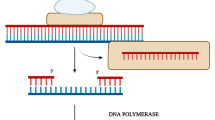Abstract
HgCl2-induced DNA damage has many similarities to those caused by X-rays; however, the single strand breaks induced by HgCl2 are not readily repaired, in contrast to those induced by X-rays. HgCl2 has also been shown to inhibit the repair of X-ray induced DNA single strand breaks. HgCl2 has been shown to induce frank single strand breaks, not alkali-labile sites. DNA repair was assessed by the disappearance of DNA lesions as evaluated by alkaline elution studies and also by CsCl density gradient analysis. Similar to X-rays, HgCl2 has also been shown to cause the formation of superoxide radicals and the depletion of reduced glutathione in intact cells. The binding of mercury to DNA was shown to be very tight since it resisted extraction with high salt and chelating agents. The binding to DNA depended upon the polynucleotide structure of the DNA, because degradation of DNA to mononucleotides resulted in the release of bound 203Hg. Methyl-HgCl has been compared with HgCl2 for the induction of DNA strand breaks in cultured rat glial cells, human nerve cells (HTB), and rat or human fibroblasts. Methyl-HgCl was much more effective at inducing DNA single strand breaks in cultured nerve cells compared with the fibroblasts. Methyl-HgCl also reduced the plating efficiency of nerve cells more than fibroblasts. These and other findings suggest that the potent cellular toxicity induced by HgCl2 and methyl-HgCl involve DNA damage. Although methyl-HgCl2 is more potent in producing DNA damage and cytotoxicity in nerve cells than in fibroblasts, it is more toxic to fibroblasts than HgCl2. The lack of repair of the extensive mercury-induced DNA damage may, in part, explain the lack of carcinogenicity of these agents, despite their potential for inducing DNA damage.
Access this chapter
Tax calculation will be finalised at checkout
Purchases are for personal use only
Preview
Unable to display preview. Download preview PDF.
Similar content being viewed by others
References
Cantoni, O., and Costa, M., 1983. Correlations of DNA strand breaks and their repair with cell survival following acute exposure to mercury(II) and X-rays, Mol. Pharmacol., 24:84–89.
Cantoni, O., Christie, N. T., Swann, A., Drath, D. B., and Costa, M., 1984. Mechanism of HgCl2 cytotoxicity in cultured mammalian cells, Mol. Pharmacol., 26:360–368.
Cantoni, O., Evans, R. M., and Costa, M., 1982. Similarity in the acute cytotoxic response of mammalian cells to mercury (II) and X-rays: DNA damage and glutathione depletion, Biochem. Biophys. Res. Commun. 108(2):614–619.
Cantoni, R., Christie, N. T., Robison, S. H., and Costa, M., 1984. Characterization of DNA lesions produced by HgCl2 in cell culture systems, Chem.-Biol. Interact. 49:209–224.
Christie, N. T., Cantoni, O., Sugiyama, M., Cattabeni, F., and Costa, M., 1986, Differences in the effects of Hg(II) on DNA repair induced in Chinese hamster ovary cells by ultraviolet or X-rays. Mol.Pharmacol., 29:173–178.
Clarkson, W. C., Hursh, J. B., Sager, P. R., and Syversen, T. L. M. 1988. Mercury, in: “Biological Monitoring of Toxic Metals,” T. W. Clarkson, L. Friberg, G. F. Nordberg, and P. R. Sager, eds., 199–246, Plenum Press, New York.
Katz, S., 1963. The reversible reaction of double-stranded polynucleotides. A step-function theory and its significance. Biochim. Biophys. Acta 68:240–253.
Robison, S. H., Cantoni, O., and Costa, M. Analysis of metal-induced DNA lesions and DNA-repair replication in mammalian cells. Mutation Res. 131:173–184, 1984.
Williams, M. W., Hoeschele, J. D., Turner, J. E., Jacobson, K. B., Christie, N. T., Paton, C. L., Smith, L. H., Witschi, H. R., and Lee, E. H., 1982. Chemical softness and acute metal toxicity in mice and drosophila. Toxicol. Appl. Pharmacol., 63:461.
Author information
Authors and Affiliations
Editor information
Editors and Affiliations
Rights and permissions
Copyright information
© 1991 Springer Science+Business Media New York
About this chapter
Cite this chapter
Costa, M., Christie, N.T., Cantoni, O., Zelikoff, J.T., Wang, X.W., Rossman, T.G. (1991). DNA Damage by Mercury Compounds: An Overview. In: Suzuki, T., Imura, N., Clarkson, T.W. (eds) Advances in Mercury Toxicology. Rochester Series on Environmental Toxicity. Springer, Boston, MA. https://doi.org/10.1007/978-1-4757-9071-9_16
Download citation
DOI: https://doi.org/10.1007/978-1-4757-9071-9_16
Publisher Name: Springer, Boston, MA
Print ISBN: 978-1-4757-9073-3
Online ISBN: 978-1-4757-9071-9
eBook Packages: Springer Book Archive




